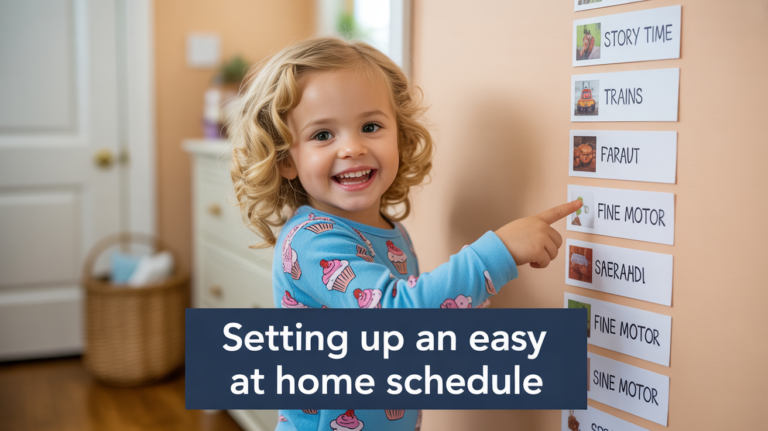Homeschooling Laws by State: Made Simple & Clear
Homeschooling offers complete educational freedom, but state laws create surprising challenges. Requirements range from Texas’ no-notice policy to New York’s strict annual assessments. Understanding homeschooling laws by state is just the beginning – you’ll also need to choose between philosophies like unschooling or classical education while maintaining a proper homeschool portfolio.
This guide provides the exact roadmap you need to stay compliant while creating the ideal learning environment for your child. Whether you’re just starting out or refining your existing approach, we’ll walk you through every legal requirement and educational option for a successful homeschool journey.
Key Takeaways: Mastering Your Homeschooling Journey
Research your specific state’s homeschooling laws (notification, curriculum, assessment) using official government and legal advocacy sites like HSLDA.
Select or blend educational philosophies (e.g., Unschooling, Classical, Charlotte Mason) to align with your child’s learning style and family values.
Use a comprehensive homeschool planner for schedules and legal records. Create a detailed portfolio of student work for compliance and progress tracking.
Base your knowledge on official sources and expert advice, building trust and authority in your homeschooling approach.
Regularly review laws and resources, adapting your methods to ensure ongoing legal compliance and enhance educational quality.
Decoding Homeschooling Laws by State: A Legal Imperative
Understanding the legal framework is not merely a formality; it is a fundamental pillar of responsible and successful homeschooling. Without adhering to state-specific regulations, families risk legal complications and jeopardize their child’s educational progress.
you can read a complete blog about Homeschooling Laws by State.
What Are the Legal Requirements for Homeschooling in the United States?
Homeschooling is legal across all 50 U.S. states, a right strongly affirmed by the landmark 1972 Supreme Court case, Wisconsin v. Yoder, which upheld parental educational freedom. However, state laws vary dramatically, often with local enforcement differing from state guidelines.
This can cause confusion, making it vital for homeschooling families to understand specific state requirements. When in doubt, contact your local district or a homeschool group, or consult legal defense associations if you believe your rights are being infringed.
Legal Requirements for Homeschooling and Regulation Levels in the U.S.
Homeschooling laws vary by state and fall into three categories: high, moderate, or low regulation. Knowing your state’s level helps you understand your responsibilities and rights. Here you can also read about How to Start Homeschooling: The 7-Steps Ultimate Guide in detail.
U.S. Homeschooling Requirements – State-by-State Table
| State | Level | Age | Notice | Testing | Subjects | Hours/Days | Parent Reqs |
|---|---|---|---|---|---|---|---|
| New York | 🔴 High | 6-16 | Annual + quarterly | Grades 9-12 | Full K-12 list | 180 days | HS diploma |
| Pennsylvania | 🔴 High | 8-17 | Annual affidavit | Grades 3/5/8 | 11 subjects | 180 days | HS diploma |
| Massachusetts | 🔴 High | 6-16 | Pre-approval | Local decision | None specified | 180 days | Varies by district |
| Vermont | 🔴 High | 6-16 | Annual | Yearly eval | 6 core areas | 175 days | None |
| Rhode Island | 🔴 High | 6-18 | Approval req’d | Agreed method | 7 subjects | 180 days | None |
| North Dakota | 🟡 Moderate | 7-16 | Annual | Grades 4/6/8/10 | Public equivalent | 175 days | HS diploma |
| Washington | 🟡 Moderate | 8-18 | Annual | Standardized test | 9 subjects | 1,000 hrs | 45 college credits |
| Oregon | 🟡 Moderate | 6-18 | One-time | Grades 3/5/8/10 | None specified | None | None |
| Texas | 🟢 Low | 6-18 | None | None | “Basic education” | None | None |
| Idaho | 🟢 Low | 7-16 | None | Optional | Comparable | None | None |
| Oklahoma | 🟢 Low | 5-18 | None | None | None | None | None |
How Do I Research My State’s Specific Homeschooling Regulations?
To comprehensively understand homeschooling regulations, prioritize your State Department of Education Website. Directly access these official sites by searching “homeschooling laws” or “non-public education” to find precise statutory language and administrative regulations for your state.
Crucially, Key Advocacy Organizations like the Home School Legal Defense Association (HSLDA) offer invaluable support. HSLDA provides detailed, state-by-state homeschooling law summaries, interactive legal maps, and FAQs, vital for understanding diverse requirements. The Coalition for Responsible Home Education (CRHE) also offers valid summaries of state laws, contributing to a holistic understanding, even if their policy focus differs.
Finally, connect with State-Specific Homeschooling Associations. Run by experienced parents, these groups offer practical interpretations, localized insights, and strong support networks through online forums and local meetings, providing nuanced advice beyond formal legal texts. Utilizing these varied resources ensures a thorough grasp of homeschooling’s legal landscape.
Understanding Key Legal Terms: Notice, Curriculum, and Assessment
Navigating state laws often requires familiarity with specific terminology. Here’s a breakdown of common legal requirements you might encounter:
- Notice of Intent (NOI): This is a formal declaration submitted to your local school district or state education department, informing them of your decision to homeschool. It typically includes your child’s name, age, address, and your signature as the homeschooling parent. Deadlines for submission vary significantly by state, so timely filing is crucial.
- Curriculum Requirements: State laws differ on how specific your curriculum must be. Some states merely require “bona fide instruction” or “comparable instruction” to public schools, giving parents broad discretion. Others mandate specific subjects (e.g., reading, math, science, history, civics) and may even require submission of curriculum outlines or syllabi for approval.
- Assessment & Record-Keeping:
- Standardized Testing: Many states require homeschooled students to take state-approved standardized tests at specified intervals (e.g., every 2-3 years, or at certain grade levels like 3rd, 5th, 8th, and 10th grade). These tests typically cover core academic subjects.
- Portfolio Reviews: In some states, parents must maintain a portfolio of student work (work samples, reading lists, field trip logs) that is reviewed annually by a certified teacher or designated evaluator. This review confirms that adequate educational progress is being made.
- Attendance Records: A strict count of instructional days or hours per academic year is mandated in numerous states. Maintaining a meticulous log is paramount for compliance.
What Are the Major Homeschooling Philosophies and How Do They Differ?
Beyond legal compliance, a foundational aspect of homeschooling is choosing an educational philosophy that resonates with your family’s values and your child’s unique learning style. These philosophies provide a guiding framework for your curriculum choices, daily rhythms, and overall approach to education.
Homeschooling offers the unique advantage of adopting an approach that truly fits your child, rather than fitting your child into a rigid system. Most homeschooling families, however, find themselves naturally adopting an “eclectic” approach, blending elements from various philosophies to create a personalized educational journey.
Definition: Often considered the most flexible approach, unschooling is a child-led, interest-driven learning method where formal lessons and fixed curricula are eschewed. Learning occurs organically through real-life experiences, exploration, and the pursuit of natural curiosities.
Parental Role: The parent acts as a facilitator, resource provider, and keen observer, nurturing the child’s innate desire to learn rather than directing it.
Key Pros & Cons: Fosters deep passion for learning, promotes autonomy, and can feel incredibly natural. However, it requires significant parental trust in the child’s intrinsic motivation and diligent record-keeping for legal compliance, as its “unstructured” nature can sometimes be misunderstood as “no learning.”
Definition: This method closely mimics a conventional public or private school environment within the home. It typically involves structured lessons, textbooks, worksheets, and a set daily or weekly schedule, often adhering to grade-level standards.
Parental Role: The parent primarily functions as the teacher, delivering lessons and assessing progress.
Key Pros & Cons: Provides familiarity for parents and children transitioning from traditional school, offers clear progress tracking, and utilizes readily available curriculum. It can, however, be less flexible than other approaches.
Definition: A rigorous, time-tested approach based on the medieval Trivium, which divides learning into three stages:
- Grammar Stage (elementary): Focus on memorization of facts, foundational knowledge, and basic skills.
- Logic Stage (middle school): Emphasis on critical thinking, reasoning, and understanding connections.
- Rhetoric Stage (high school): Focus on articulate expression, persuasive communication, and independent thought.
Parental Role: Guides the child through these stages, emphasizing timeless literature, history, and a strong liberal arts foundation.
Definition: Inspired by 19th-century British educator Charlotte Mason, this philosophy champions “living books” (rich, engaging literature written by passionate authors) over dry textbooks. Key elements include short lessons, nature study, habit formation, copywork, dictation, and narration (children retelling what they’ve learned).
Parental Role: Cultivates a rich intellectual and moral environment, providing access to “living ideas” rather than spoon-feeding information.
Definition: Rooted in the work of Dr. Maria Montessori, this child-centered approach emphasizes self-directed activity within a “prepared environment.” It focuses on hands-on learning with specially designed materials, fostering independence, concentration, and practical life skills.
Parental Role: Acts as an observer and guide, preparing the learning environment and introducing materials as the child is ready.
Definition: This method involves an in-depth exploration of a single topic or theme across multiple academic subjects. For example, studying “Ancient Egypt” might integrate history, geography, art, science, and literature all around that central theme.
Parental Role: Designs integrated learning experiences, connecting various subjects around a chosen unit.
Definition: The most common approach, eclectic homeschooling involves intelligently combining elements from various philosophies, curricula, and resources to perfectly suit each child’s individual learning style, interests, and the family’s values. It is highly adaptable and personalized.
Parental Role: The adaptable curator, constantly assessing and adjusting the educational blend.
Practical Planning for Legal Compliance & Effective Learning
Regardless of your chosen philosophy, effective planning and meticulous record-keeping are indispensable for both legal compliance and fostering a productive learning environment.
How Can I Create an Effective Homeschool Planner for Legal & Educational Success?
A well-structured homeschool planner is more than just an organizational tool; it’s a critical record-keeping device that can ensure legal compliance and track your child’s educational journey.
Purpose of a Planner
A homeschool planner goes far beyond organizing lessons — it acts as documented proof of instruction, attendance, and progress, which is especially essential in states with reporting requirements. It transforms your daily activities into a verifiable legal record.
Key Components of an Effective Homeschool Planner
- Academic Calendar: Crucial for marking start/end dates, holidays, breaks, and any state-mandated instructional days.
- Curriculum Mapping: A clear outline of subjects taught, resources utilized (textbooks, online platforms, field trips), and learning goals for each.
- Daily/Weekly Schedules: A flexible routine that outlines subjects, activities, and approximate time allocations. This doesn’t have to be rigid but provides structure.
- Attendance Log: A non-negotiable for many states. Track days or hours of instruction to meet state minimums.
- Reading Logs: Document books read, including titles, authors, and completion dates.
- Progress Tracking: Space for notes on academic achievements, challenges, adaptations made, and social-emotional development.
Digital vs. Physical Planners
- Digital Options: Tools like Notion, Google Calendar, Trello, or dedicated homeschooling apps (e.g., Homeschool Planet) offer flexibility, searchability, and easy data backup. They can simplify tracking and reporting.
- Physical Planners: Many parents prefer tangible planners (e.g., Erin Condren Teacher Planner, dedicated homeschool planners available on Etsy or Amazon) for the tactile experience of writing and visual overview. Printable templates are also widely available.
Customization for Your State’s Laws
It’s paramount to align your planner with your specific state’s legal requirements. If your state requires hourly tracking for certain subjects, ensure your planner includes fields for this. If annual assessments are due by a specific date, mark these prominently within your calendar.
Building Your Homeschool Portfolio: Documenting Progress for Compliance
A homeschool portfolio is a curated collection of your child’s work and your educational records, serving as concrete evidence of their learning journey.
What is a Homeschool Portfolio?
A comprehensive collection of student work samples, lesson plans, attendance logs, reading lists, and any assessments that collectively demonstrate academic progress over a given period, typically an academic year.
Why Portfolios are Essential (Even if Not Required):
A homeschool portfolio serves multiple purposes. In states requiring reviews, it acts as legal proof of compliance. It’s also a helpful assessment tool, allowing you to track progress, spot learning gaps, and plan ahead.
As your child grows, the portfolio can support college applications, scholarships, or even future jobs by helping build transcripts. Beyond that, it becomes a keepsake, capturing the unique story of your child’s learning journey.
What to Include in a Homeschool Portfolio:
A comprehensive homeschool portfolio typically includes official correspondence, such as your Notice of Intent and any communications with education authorities. It should also have a curriculum list detailing textbooks, online programs, and resources used for each subject.
Maintain attendance records with signed and dated logs, along with work samples across subjects that show progress throughout the year—essays, math sheets, art, and more. Include assessment results, like test scores or evaluation letters, and a reading list of books your child completed.
Don’t forget to log extracurriculars and field trips, such as museum visits or sports activities. Lastly, add parental observations that reflect your child’s learning journey, noting strengths, challenges, and adjustments made along the way.
How Can You Keep Your Homeschool Portfolio Organized?
To keep your homeschool portfolio organized, aim for methodical collection—gather work samples weekly or monthly to avoid last-minute stress. Clearly label each piece with dates, subjects, and assignment details for easy reference.
Choose a format that works for you: a physical binder or file box, or a digital system like Google Drive, Dropbox, or a portfolio app. Finally, set a review cycle, such as quarterly or twice a year, to track progress and stay aligned with state requirements.
How Do I Ensure My Homeschooling Information is Authentic and Authoritative?
As a homeschooling parent, your commitment to providing a valid and valuable education is paramount. Establishing and maintaining authenticity in your child’s learning and authority in your record-keeping is key to long-term success and peace of mind.
- Rely on Official and Primary Sources: Always prioritize information directly from your state’s Department of Education, legislative websites, and official legal documents. For broader understanding, refer to established legal advocacy groups like HSLDA. Be cautious of anecdotal advice that may not align with current statutes.
- Consult Legal Counsel for Specific Cases: While this guide provides comprehensive information, it is not a substitute for legal advice. For nuanced situations, interpretations, or challenges, always consult directly with a qualified legal professional specializing in homeschooling law, such as through HSLDA’s legal services. This ensures that your specific circumstances are addressed with the highest level of legal accuracy.
- Engage with Reputable Homeschooling Communities: Local and state-level homeschooling organizations, online forums moderated by experienced parents, and reputable homeschooling conferences can offer valuable insights, practical tips, and clarification on common challenges. These communities often share real-world applications of laws and philosophies.
- Embrace Continuous Learning and Adaptation: Homeschooling laws and educational resources evolve. Make it a practice to review your state’s regulations annually. Stay informed about new curricula, technologies, and educational trends. This proactive approach not only keeps you compliant but also enhances the quality of your child’s education. This commitment to ongoing improvement significantly increases the “relative quality difference” of your approach year after year. By consistently updating your methods, resources, and understanding of legal frameworks, you are perpetually elevating your educational program, signaling to both your child and any reviewing bodies that you are dedicated to providing an ever-improving, top-tier home education. This dedication makes your program inherently more “authoritative” over time.
- Maintain Exemplary Records: Even in low-regulation states, comprehensive record-keeping is a hallmark of an authoritative homeschooling approach. Should any questions arise, meticulous records serve as undeniable evidence of your commitment and your child’s progress.
FAQs
Non-compliance can lead to truancy charges, fines, court intervention, and even legal action by child protective services. It’s crucial to file required paperwork and maintain records to avoid legal complications and ensure your child’s education is recognized.
Homeschooling laws for children with special needs vary significantly by state. Some states require specialized curriculum plans or evaluations, while others offer more flexibility. Always consult your state’s Department of Education and legal advocacy groups like HSLDA.
Immediately research the homeschooling laws of your new state. File a notice of withdrawal in your old state and a notice of intent in your new state to ensure seamless legal compliance.
Yes, some high-regulation states like Pennsylvania or New York require homeschooling parents to possess specific qualifications, often a high school diploma or GED. Most states don’t have formal requirements.
A homeschool transcript is typically created by the parent, including courses, grades, and credits. It requires detailed records and often course descriptions. Colleges generally accept well-documented homeschool transcripts.
Use unit studies, set time blocks for independent work, and teach family-style subjects together. Try looping schedules and create adaptable learning zones for each child.
Deschooling is a decompression period after leaving traditional school. It allows time to shed rigid habits, reawaken curiosity, and ease into flexible, student-led learning.
Through co-ops, sports, community classes, youth groups, and volunteer work — providing rich, real-world social interaction beyond same-age classroom settings.
Traditional homeschooling may follow a 9–3 schedule. Unschooling is interest-led and flexible. Charlotte Mason uses short lessons. Most families blend styles based on needs.
Match curriculum to your style: classical = structured, unschooling = organic. Look at reviews, samples, and your state’s subject requirements. Adapt to your child’s needs.
Observe your child’s learning style. Research philosophies like Charlotte Mason, Classical, and Unschooling. Try a deschooling phase to explore freely before deciding.
Yes. Eclectic homeschooling blends approaches like Charlotte Mason and Unschooling. It customizes learning for each child’s needs, making education more flexible and effective.
Traditional methods use formal tests. Unschoolers may use portfolios and journals. All approaches should maintain records in line with state laws and learning goals.
Conclusion
Embarking on the homeschooling journey requires careful consideration of its foundational elements: navigating the intricate web of state laws, consciously choosing an educational philosophy that aligns with your family’s vision, and meticulously planning and documenting your child’s progress. By mastering these core areas, you transform potential challenges into opportunities for deep, personalized learning.
This article aimed to serve as your authoritative information hub, providing the clarity and depth necessary to move forward with confidence. Remember, the goal is not just compliance, but to create a rich, fulfilling educational experience that honors both legal requirements and your child’s unique potential.
References
- [1] Homeschool.com. (n.d.). Homeschool Laws by State. Retrieved from https://www.homeschool.com/articles/state-homeschooling-laws/
- [2] New York State Education Department. (n.d.). Home Instruction Program (Homeschooling) FAQ. Retrieved from https://www.nysed.gov/common/nysed/files/programs/home-instruction/home-instruction-program-homeschooling-faq.pdf
- [3] Pennsylvania Department of Education. (n.d.). Homeschooling. Retrieved from https://www.pacodeandbulletin.gov/Display/pacode?file=/secure/pacode/data/022/chapter349/s349.26.html&d=reduce
- [4] Michigan Department of Education. (n.d.). Homeschooling. Retrieved from





2 Comments